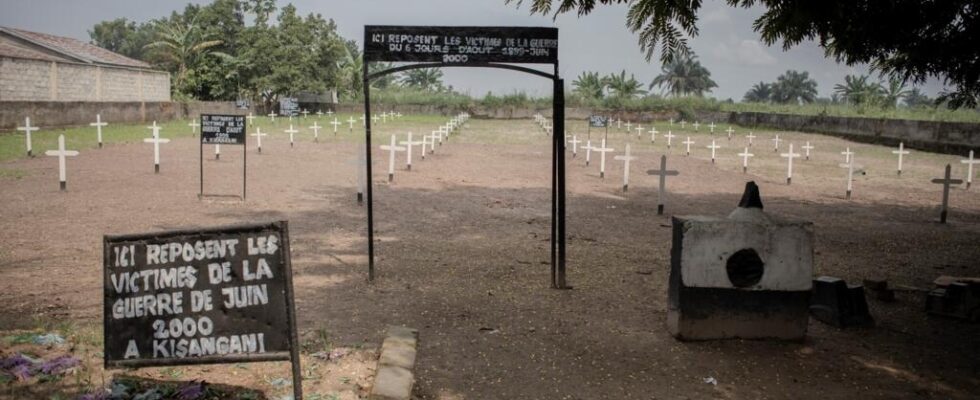In 2000, Kisangani, in the north-east of the DRC, was the scene of deadly clashes between Rwandans and Ugandans. These two occupying armies, which had invaded eastern DRC during the Second Congo War (1998-2003), fought violently for control of Kisangani and its natural resources. Intense fighting, which left more than 1,000 civilian victims, several hundred injured, and extensive damage in the city. In June 2024, compensation for these victims began. But, on the ground, some of them denounce the management of this Fund for the Reparation and Compensation of Victims of Illicit Activities of Uganda (Frivao). Explanations.
3 min
With our correspondent in Kisangani, Joseph Kahongo
In DRCthe distribution of the Fund for Reparation and Compensation for Victims of Illicit Activities in Uganda (Frivao) of June 2000 began in the province of Tshopo.
The process of distributing $160 million received by the DRC out of the expected $325 million is contested by some victims.
Frivao decided to start the compensation process without having counted all the victims in all the provinces concerned.
Read alsoDRC: Compensation plan for victims of Uganda in the North-East on track
Slow processing of files criticized
Launched on June 8, this process of reparation for victims is not appreciated by everyone: the slowness of processing files is decried in particular by a victim of the “Six Day War” who did not want to reveal his identity: ” Since we were waiting for this money, we only released one list, and it was on June 10 that we saw this list of 139 people who were supposed to be paid. But, as of July 2, at the bank, only 139 people were waiting. And the victims are becoming impatient. »
Beyond the process, the amounts of compensation themselves are often considered too low. Divided into three categories, the lump sums vary from 280 to 1,040 US dollars. They are only the first tranche before all the victims are identified in other provinces.
But for the civil society organization Lucha, this path of Frivao does not respect the judgment of the International Court of Justice (ICJ), the principal judicial organ of the United Nations, which condemned Uganda in 2022: ” The ICJ ruling concerns the Greater East: the provinces of Ituri, Bas-Uélé, Haut-Uélé are concerned. Frivao should list the victims everywhere there. But, unfortunately, Frivao made a procedural error instead of continuing to register the victims first. Frivao proceeded to remit the amounts to the victims of Kisangani only. »
Read alsoDRC: in Kisangani, the trauma of the 2000 clashes between Ugandans and Rwandans
3,163 victims out of 14,000 identified in Kisangani
For the time being, according to the Congolese Press Agency and civil society, 3,163 victims out of 14,000 identified in Kisangani have been declared eligible for compensation by Frivao. And only about 100 people have already received their compensation.
Frivao was created in April 2023 by the President of the Republic to compensate the victims of the Six-Day War that took place in 2000 in what was called the Eastern Province until 2015 and which now corresponds to the provinces of Bas-Uélé, Haut-Uélé, Ituri and Tshopo.
As a reminder, from June 5 to 10, 2000, the Rwandan and Ugandan armies clashed in Kisangani, a city of nearly 1.5 million inhabitants located in the northeast of the DRC. According to a UN report, more than 700 people, civilians, were killed there during these six days. And more than 400 homes were destroyed during the clashes.
